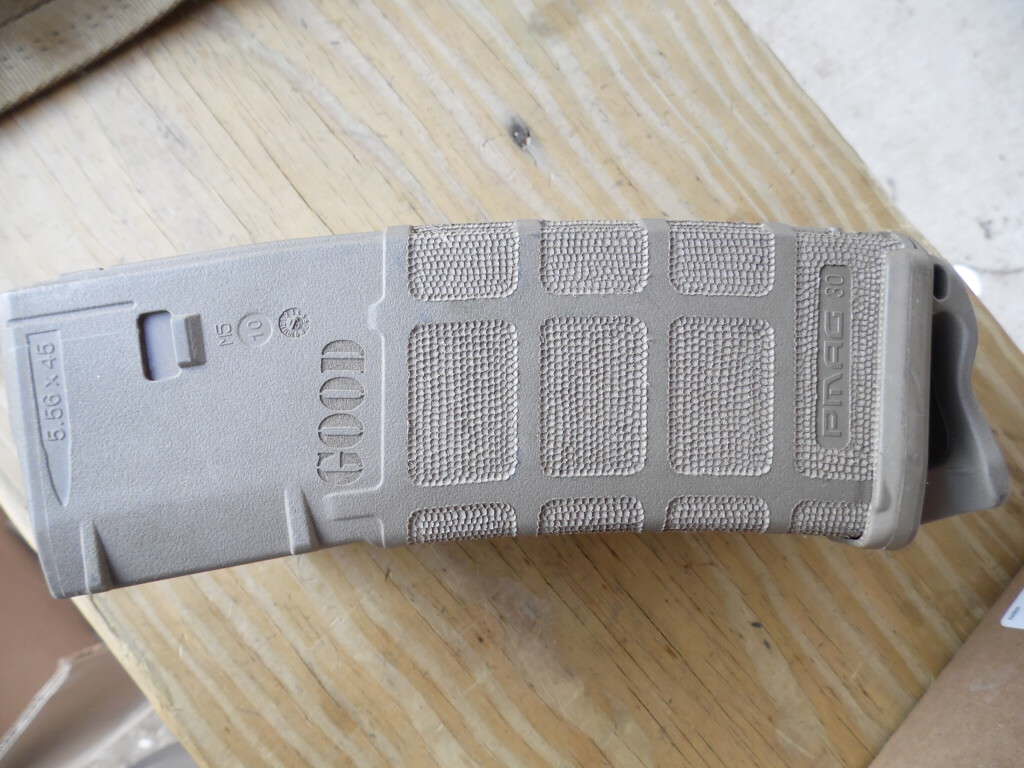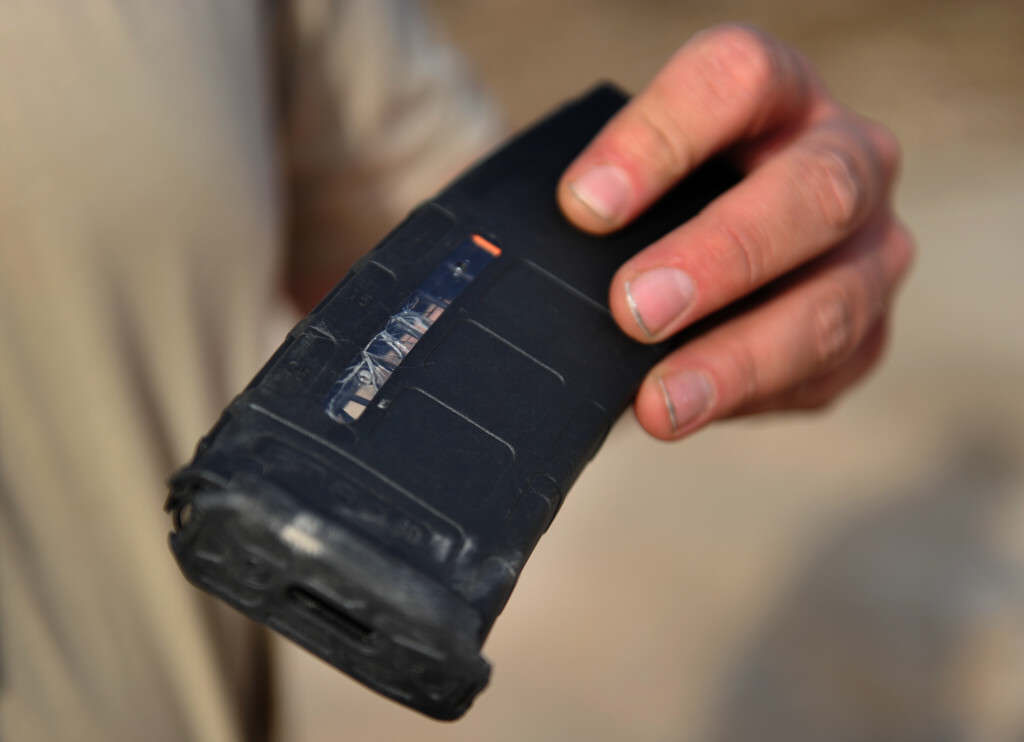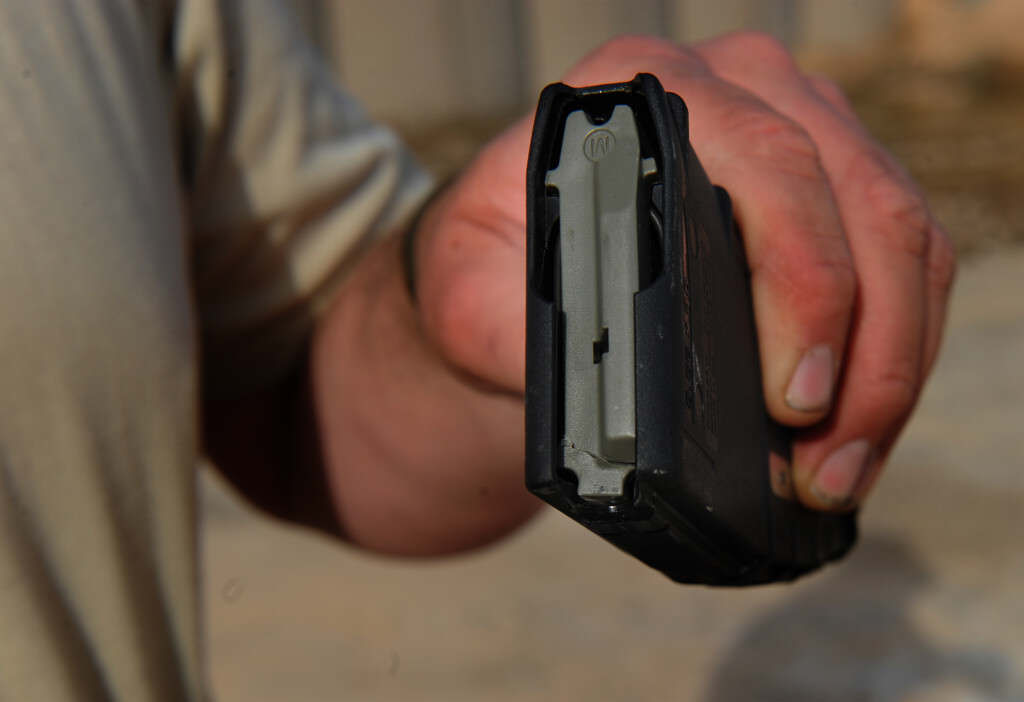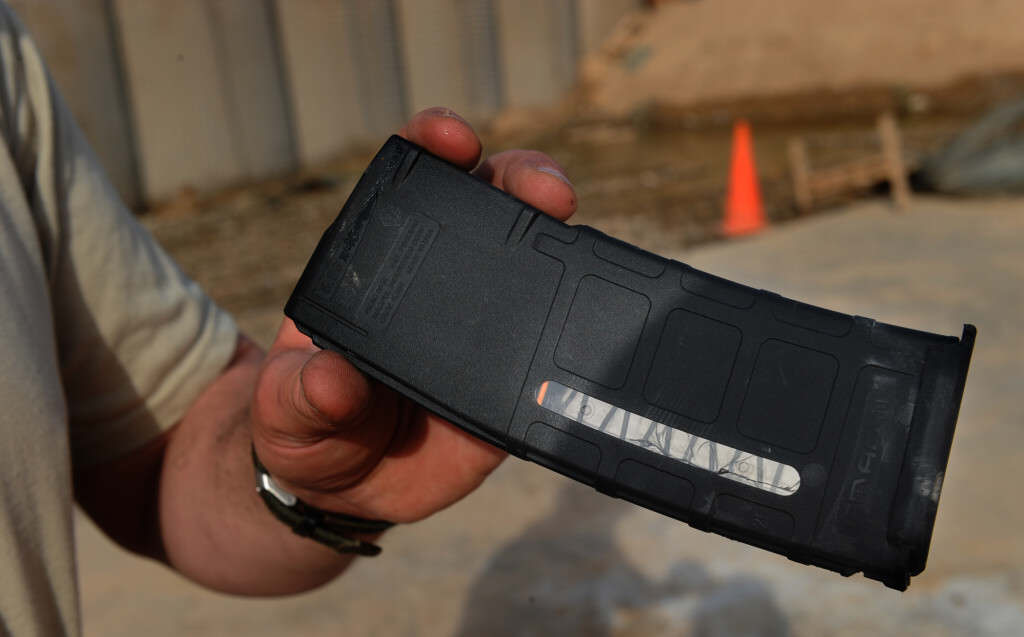Proper care of magazines should be common knowledge. Doing so as needed should be second nature. Unfortunately, not only have many shooters not been taught the hows/whys and whens of magazine care, there are many who do not even know how to disassemble one. This is particularly true of the old, ubiquitous (grunts: ubiquitous) 30-round USGI magazine. Regardless of the mag, you need to take care of it. This is a great primer on that, written by my friend Jared, one of the primary instructors at Rockwell Tactical. It first appeared over on Black Sheep Warrior. I thought it warranted ALCON distro. If you have anything to add, let's hear it. Mad Duo Nate
MAGAZINES
by Jared of Rockwell Tactical
Magazines in the modern firearm are a part of the weapon system. Your firearm is next to useless without magazines that work. I have seen too many people spend lots of money on a gun and give no thought to spending anything on magazines. You should get the best mags you can, yet don’t get too attached to them when it’s time for them to go.
Author, putting a broken PMAG through its paces.
You should use a paint marker and mark every magazine you have. I use a simple symbol that I made up, while some of the guys on my team use their initials. That way everyone knows which ones belong to whom. You should also number every mag. If you have a problem while shooting, you just need to remember what number magazine was bad. If the same malfunction happens a few times in a row, then it most likely is the mag that is causing the malfunction.
You should mark every mag you have and be prepared to throw it out.
Most of the malfunctions you will have with your firearm are because of the magazine. If you ID a bad mag, just get rid of it. There is no need to get emotionally attached to it. Don’t try to sell it and don’t just leave it around to be picked up by someone else. I write “bad” on them, and then throw them out. You could always give them to someone you hate, but even that is a little too mean. Pawn shops and surplus stores around military bases are notorious for selling someone’s old, worn-out mag.
“I have seen too many people spend lots of money on a gun and give no thought to spending anything on magazines. You should get the best mags you can, yet don’t get too attached to them when it’s time for them to go.”
You should check your mags as a part of your routine maintenance. Check the spring tension, making sure that it is strong no matter how many rounds are in it. The feed lips should also be checked as they tend to wear out. Load the mag 2/3 of the way, hold it with one hand and give it a few good palm strikes on the base of the mag. If a few rounds pop out, your feed lips are worn and it’s time to get rid of that mag. Also don’t forget to inspect every mag for any cracks or other damage.
With all of today’s magazines you can load them to maximum capacity. None of this 28 rounds in a 30 round mag or 9 rounds in a 10 stuff. If your mag causes you to have feeding problems by loading it all the way, get a new one. Make sure you routinely rotate your mags and don’t keep them loaded for an extended period of time. Despite those who say it is an urban legend, some magazine springs will take a set. A relative of mine was showing me his old GI 1911. He had a loaded mag in it. Well, he hadn’t changed out the mag for a few years, and the rounds just fell out of it. The spring was so set to the same position that it didn’t move at all. I have also experienced a few of my own mags that have taken a set.
This PMAG had been run over by a large military vehicle but still functioned!
Another thing to consider concerning the spring life is how often they are loaded and unloaded. This is the biggest cause of springs wearing out. So if you rotate your mags every other day, you are doing much more harm to them than good. Today’s springs are of a better quality than those 50 years ago, and they will last longer. Just realize that with use, comes wear.
“We need to start thinking of magazines like an oil filter for our vehicles. Every 3000 to 5000 miles it’s time to get a new one.”
There is a difference in advice I can give between pistol and rifle magazine choices. For a pistol, with the exception of the 1911 platform, you should only use factory original mags. There are plenty of aftermarket mags, usually cheaper than the factory ones, but they are made to unknown specs. You have to ask yourself if your life is worth a few saved bucks. Stick to factory originals, but it is alright to use some of the aftermarket accessories for your magazine. I am not a big fan of the 2-round extender base plates. They are advertised as not needing a new spring and I just don’t trust that. With that said, there are a few companies that do make good, extra-power magazine springs. So if you have extenders, upgrade your springs.
Notice the cracked follower.
About the only pistol that I would trust my life with, with aftermarket mags, is the 1911. The 1911 has almost too many different aftermarket magazines to count. Some of them are very high quality (much better than the 7-round GI mags that sometimes come with the gun). During my last trip overseas, I used Wilson Combat 8 and 10-round mags. No problems with them, unlike the GI ones.
In contrast to the pistols, there are a plethora of aftermarket mags for rifles that are great to use. It seems like more types are being developed every year. Metal and polymer-based ones are both equally reliable. In my military experience, I have used the GI aluminum, steel and a few different polymer ones. All were reliable under various conditions. As long as I took the time to do regular maintenance on them, none of them gave me any more problems than normal. But don’t just trust something on reputation. If you’re going to buy the popular name brand because all your buddies are using it, you better make sure it works for you and your weapon.
A friend of mine once had his loaded Pmag run over by a big and heavy military vehicle. The base plate was broken and some of it was missing, the side window was cracked, and the follower was cracked in half. He was going to throw it away, but I grabbed it from him for some ‘real’ torture testing. Single shot: no problem. Controlled pairs: no problem. I dumped the last 20 rounds on full auto: no problem. I was, and still am, impressed by the Pmags. With that said, some of my teammates were issued what must have been a bad lot of Pmags. They had nothing but problems with them and to this day refuse to use them.
Something else I have done with a few of my M4 mags is to put a little piece of skateboard grip tape along the front edge. You can get the tape for next to nothing and I have gotten scraps for free. The tape can help you to get a better grasp of the mag, which is especially important when things are wet or otherwise slippery. I have used it on both the aluminum magazines and Pmags. Another technique is to stipple your polymer mags to give them a rougher surface. This can be easily done. Just go to Wal-Mart and buy yourself a $10 wood-burning tool in the craft department and you are in business.
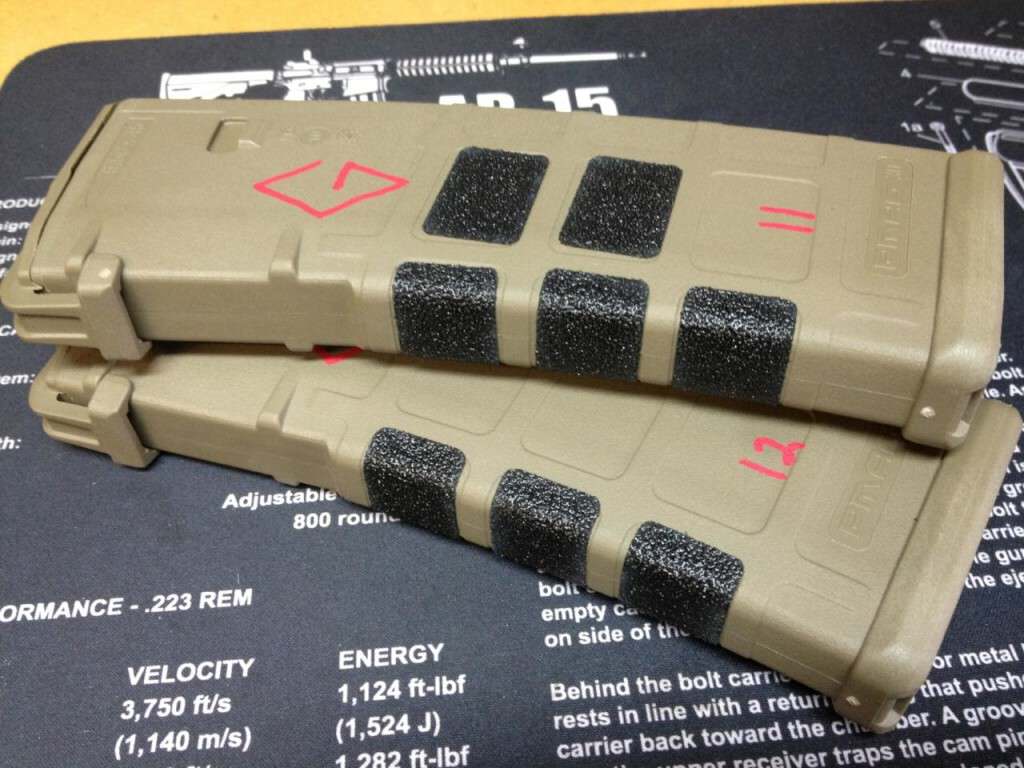
Adding grip tape can help you to get a better grasp of the mag.
We need to start thinking of magazines like an oil filter for our vehicles. Every 3000 to 5000 miles it’s time to get a new one. Use that mag till it don’t work no more, then get a new one. Whatever you use, the most important thing to remember is: if you are going to trust your life to a magazine, take it to the range and use it. Make sure it works flawlessly for you.
- Jared
Note: the original article appeared here on Black Sheep Warrior. You can follow RTG on Facebook, but be advised, the frequency of their posts varies considerably. That is because most of the RTG staff still wear the flag in service of their country (see below). They're often called away to do their "other jobs".

